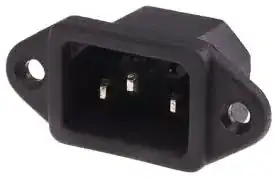You've asked a reasonable question, though it might be considered a bit "off topic" for Raspberry PI. The question is more along the lines of "construction techniques" for electrically powered devices, but you'll get some answers here anyway. You should also understand this:
Many of the answers to questions on wiring AC mains circuitry that you'll see here will "factor in" the individual author's concern over directing an inexperienced contributor in working with potentially lethal AC mains voltages.
If you have experience working with AC voltages, you may find these safety warnings pedantic, or overly tutorial. Absent professional credentials or certifications, you could help us by simply stating your experience: "I've worked with 220 VAC circuits and devices for years, and consider myself knowledgeable in all aspects of safety."... or words to that effect. If you're not experienced, please heed the warnings & do some reading on your own.
If you want a quick read on some of the fundamentals of working with AC mains voltages, there's a 2-part tutorial offered here.
All of that said, I'll offer a few thoughts on your questions below:
Using a modular PS like your "Meanwell" unit is a reasonable choice. The "pigtails" will connect to the AC input on one side, and your USB connector on the other. Make sure you get a unit that conforms to USB specs (for voltage, line and load regulation), and has sufficient current capacity to power your RPi. Some over-capacity on the PS current output is fine; RPi will draw only what it needs.
Opening a wall wart may be a bit less expensive, but may be a crapshoot because you won't know what you have to work with until you've broken it open. At that point, it may not be useful for anything else. But it's certainly worth a try if you don't mind a sacrifice in the quest for knowledge! Again, verify the wall wart is spec'd sufficiently to support your RPi.
Power (current) requirements for the various RPi models are listed here.
Shop carefully for your electrical hardware. The AC input and output blocks you've pictured in your question look reasonable, but you may have a choice of screw terminals vs solder terminals vs strip-and-insert for the wiring connections. These little things can make a difference in your project. I always favor 'ring lugs' for terminating AC mains wiring to devices like these; I feel the risk of a hot wire coming loose inside the box is lower, but this is strictly my personal opinion.
And that's it. Good luck & let us know if you have further detailed questions.

